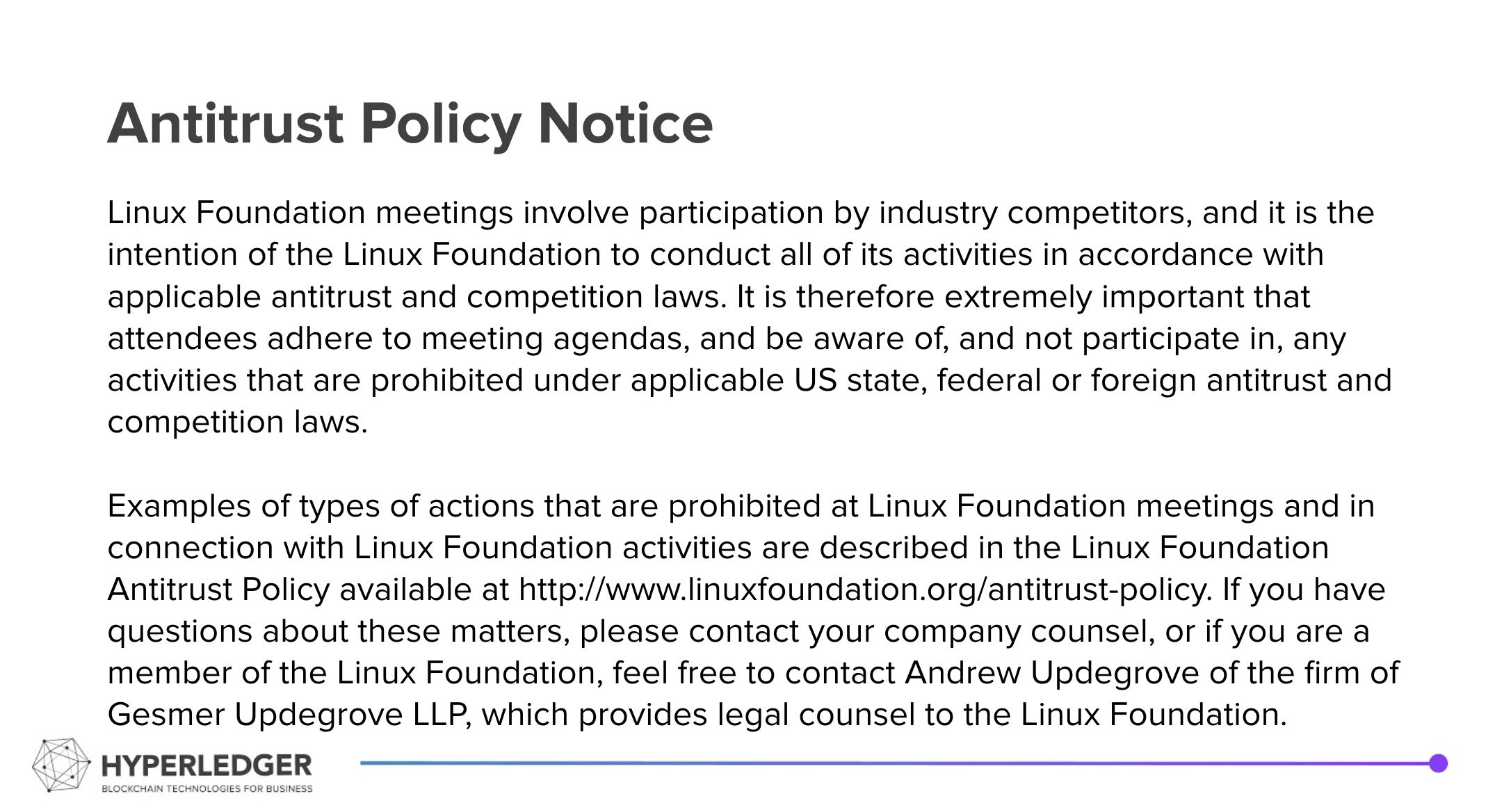...
| Excerpt |
|---|
|
Recording from the call: 20210112 Indy DID Method Specification Recording
Hyperledger is committed to creating a safe and welcoming community for all. For more information please visit the Hyperledger Code of Conduct. |
|---|
...
- Status of HackMD Document – updated to reflect discussions made.
- Transformations:
- NYM
- "endpoint" – historical – such ATTRIBs are on the ledger now
- DID Core components:
- Verifications Methods
- Verification Relationships
- Agent Service Endpoints
- Linked Domain Endpoints
- Additional Public Keys
- Last meeting we talked about the easy cases:
- NYM and no ATTRIB
- NYM and ATTRIB only with an "endpoint" URL.
- Structure of specification
- Request: Formalize the Table of Contents and organizing the document into that structure
Future Discussions:
- Concepts agreed to:
- Only the last value of an ATTRIB type should be merged into the document; each instance should be complete
- We don't have to track streams of updates
- We are less likely to get into an invalid state
- For "endpoint" and "serviceEndpoint" – the last of either should be used.
- The "serviceEndpoint" and other DID Core concepts are likely to be complete sections of the JSON
- This means there is less of a chance of transforming the document
- If all the sections are complete, is it worth breaking them up vs. having a single "DIDDoc" ATTRIB and merging into it the data from the NYM transaction?
- Only the last value of an ATTRIB type should be merged into the document; each instance should be complete
- Concepts agreed to:
- Controller discussion
- Question: Should the ability to update a DID use current Indy rules (checking the NYM owner signature and if necessary an Endorser) or should the contents of the DIDDoc be used?
- This generated a discussion of the trade-off in the changes needed to Indy vs. the need to enable DID Core capabilities and organizational use cases (e.g. a DID controlled by multiple people in an organization).
- Idea:
- Extend the NYM to include more complex DID Controller concepts – e.g. multiple verkeys and multiple signatures required for writes, including (perhaps) N of M requirements.
- If we did this, the more complex NYM would have to be merged into the ATTRIB(s) that make up the DIDDoc
- Idea:
- Instead of having multiple ATTRIBs assembled into a DIDDoc, use a version identifier to handle the transformation of the NYM+ATTRIB to make the DIDDoc to enable backwards compatibility
- Open question: While we want to merge the NYM into the DIDDoc, do we need to have multiple ATTRIBs assembled into a DIDDoc, or just one?
Future Discussions:
- Request for Markus Sabadello to provide guidance on aligning the "NYM as controller" concept (above) with and the DID Core specifications concept of a controller.
- ATTRIB transformations to generate a DIDDoc
- DNR and DND discussions
- DNR and DND discussions
- DIDDocs:What is the structure of the DIDDoc template - core and extensions?
- Structure for Indy specific objects returned as DIDs
- What is the DID?
- What is the DIDDoc format?
- Existing objects – backwards compatibility
- DID vs. DID URL – how could that be done?
...

